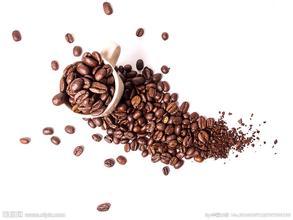Introduction of manor varieties in environmental producing area of Arabica coffee bean growing area in Latin America
Arabica coffee beans growing region in Latin America
Roast: Medial/City/Full city/Espresso/Dark/French Colombia beans are among the few roasted beans that range from light to dark, from light to clean to dark sweet, within such a wide range
Colombia beans will have different styles.
Colombia, once the second-largest coffee producer after Brazil but now third, overtaken by Vietnam, is the world's largest supplier of washed beans. Colombia has become synonymous with good coffee after years of image building. Although the flavor is balanced, the texture is thick, the acidity is bright, and the aroma is OK, but on closer inspection, most of the Colombia beans are mediocre and have little personality. When choosing Colombia beans, you can't just look at the grade mark, but pay attention to the production area, because Colombia is currently graded according to the size of beans, so the Supremo or Excelso on the coffee bag refers to the size of beans rather than the quality, but the size of beans actually has no inevitable relationship with the flavor of the entrance, but the altitude of the origin and the taste are closely related, so this grading system is often criticized by people. In fact, most of them,
South American countries have moved to elevation grading, but only Colombia maintains the traditional grading system, and many Colombia coffee-makers have recognized this and begun to demand a change in the grading system. Colombia's famous large producing areas include Medellin, Armenia and Manizales, so MAM is sometimes seen on the bag containing coffee, which means that the coffee beans may come from any of these three producing areas. Almost all of Colombia's finest coffee beans are grown on traditional small farms, which grow old coffee trees of the Typica species. The species and careful harvesting and handling procedures make them extremely high in quality, but relatively low in yield.
Robusta is generally smaller in particle size than Arabica, and is not as rich in taste and aroma as Arabica. But the choice of coffee depends on individual taste, and everyone has a different definition of good coffee. Robusta is generally grown in the Old Hemisphere, mainly in Africa, Indonesia and Vietnam. Arabica is also grown in Africa and Papua New Guinea, but today it is mainly grown in Latin America. Among the world's major coffee producers, Colombia grows only Arabica coffee. The vast majority of coffee grown in Vietnam is Robusta. Brazil and India have both.
Arabica costs more. Most instant coffee is Robusta, and cheap coffee is Robusta. Arabica coffee doesn't have to be of high quality, although we can pay more for it.

Important Notice :
前街咖啡 FrontStreet Coffee has moved to new addredd:
FrontStreet Coffee Address: 315,Donghua East Road,GuangZhou
Tel:020 38364473
- Prev

Introduction of Arabica Coffee Flavor description, characteristics of varieties, Grinding and Calibration treatment
Arabica coffee flavor description characteristics of Arabica coffee varieties grinding scale treatment "Bourbon Amarello" yellow bourbon is a unique yellow skin of the Brazilian state of Sao Paulo bourbon variety, the general coffee fruit will turn red when ripe, but yellow bourbon will not turn red after maturity, orange named. Huang Bourbon due to the "CoE" (Cup of Excellence, Chinese name: Chaofan
- Next

Analysis of fixed-point injection method of coffee hand-correct method of coffee cloth powder
Analysis of the fixed-point injection method of coffee hand-the correct advantages of coffee cloth powder: the mixing method can amplify the advantages of coffee beans, especially to enhance the taste of coffee beans, and will not be too simple.
Related
- Beginners will see the "Coffee pull flower" guide!
- What is the difference between ice blog purified milk and ordinary milk coffee?
- Why is the Philippines the largest producer of crops in Liberia?
- For coffee extraction, should the fine powder be retained?
- How does extracted espresso fill pressed powder? How much strength does it take to press the powder?
- How to make jasmine cold extract coffee? Is the jasmine + latte good?
- Will this little toy really make the coffee taste better? How does Lily Drip affect coffee extraction?
- Will the action of slapping the filter cup also affect coffee extraction?
- What's the difference between powder-to-water ratio and powder-to-liquid ratio?
- What is the Ethiopian local species? What does it have to do with Heirloom native species?

